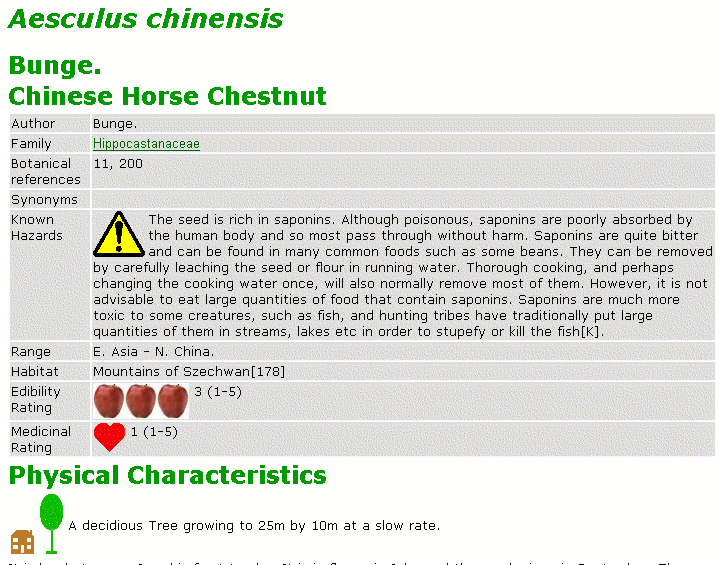pcplantdb@lists.ibiblio.org
Subject: pcplantdb
List archive
- From: Richard Morris <webmaster@pfaf.org>
- To: pcplantdb <pcplantdb@lists.ibiblio.org>
- Subject: Re: [pcplantdb] as promised...
- Date: Tue, 21 Jun 2005 23:08:40 +0100
Bear Kaufmann wrote:
Hi all,
I tried implementing the MailPosts feature. I need to use an email address for the "from" on the messages, I believe this list doesn't allow non-subscribed people to post to the list, so messages from the script will get bounced.
I used "wiki@permaculture.info" as the address. Perhaps Lawrence could add it to the list.
Just added a test edit in Main.Wiki lets see it it comes through?
Did you use the collection feature where it waits a few hours and combines all the changes before emailing?
Something I ran across which didn't make it into the email was http://www.state-machine.com
It tracks the influence of campaign contributions to Senators. Each type of contribution (3 of them) attracts the nodes (Senators) to itself in proportion to the amount of money the Senator raised from that source. You are free to move the attractors around. So you can sort out objects based on multiple variables on a 2d surface. This is along the lines of what I'm thinking of for the RichClient (looking for a better name) search feature.
I'm inclined to make the RichClient a sub-project here. I think we may first really want to work on an good HTML based implementation, and once that's respectable looking, move on to implementing the RichClient.
Lawrence
> What is RichClient all about?
Possibly A smarter client, representing information as a set of node and links in 2D.
A lot of the RichClient info, looks like it will be useful for other bits of the spec, user scenarios, plant specifications etc.
I've cut down the RichClient bit so is the specifics of the client.
Also, when I get well tagged output to work with, what kind of look would you all like for the search results and plant listing? Any websites to reference for design ideas?
I've been playing a bit with the pfaf design. Attached webpage
shows some of features.
Rich
Title: Aesculus chinensis - Plants For A Future database report
All the information contained in these pages is Copyright
(C) Plants For A Future, 1996-2003.
Last modified: June 2004 (may well have been modified since!)
Plants For A Future is a charitable company limited by guarantee, registered in England and Wales.
Charity No. 1057719, Company No. 3204567, HTML version prepared by Rich Morris - Home Page
|
-
[pcplantdb] as promised...,
Stephanie Gerson, 06/20/2005
- Re: [pcplantdb] as promised..., Richard Morris, 06/20/2005
-
Re: [pcplantdb] as promised...,
John Schinnerer, 06/21/2005
-
Re: [pcplantdb] as promised...,
Richard Morris, 06/21/2005
-
Re: [pcplantdb] as promised...,
Bear Kaufmann, 06/21/2005
-
Re: [pcplantdb] as promised...,
Lawrence F. London, Jr., 06/21/2005
-
Re: [pcplantdb] as promised...,
Lawrence F. London, Jr., 06/21/2005
- Re: [pcplantdb] as promised..., Lawrence F. London, Jr., 06/22/2005
-
Re: [pcplantdb] as promised...,
Lawrence F. London, Jr., 06/21/2005
- Re: [pcplantdb] as promised..., Richard Morris, 06/21/2005
-
Re: [pcplantdb] as promised...,
Lawrence F. London, Jr., 06/21/2005
-
Re: [pcplantdb] as promised...,
Bear Kaufmann, 06/21/2005
- Re: [pcplantdb] as promised..., Richard Morris, 06/21/2005
-
Re: [pcplantdb] as promised...,
Richard Morris, 06/21/2005
-
[pcplantdb] Reminder - John on vacation...,
John Schinnerer, 06/22/2005
- Re: [pcplantdb] Reminder - John on vacation..., Richard Morris, 06/22/2005
Archive powered by MHonArc 2.6.24.

